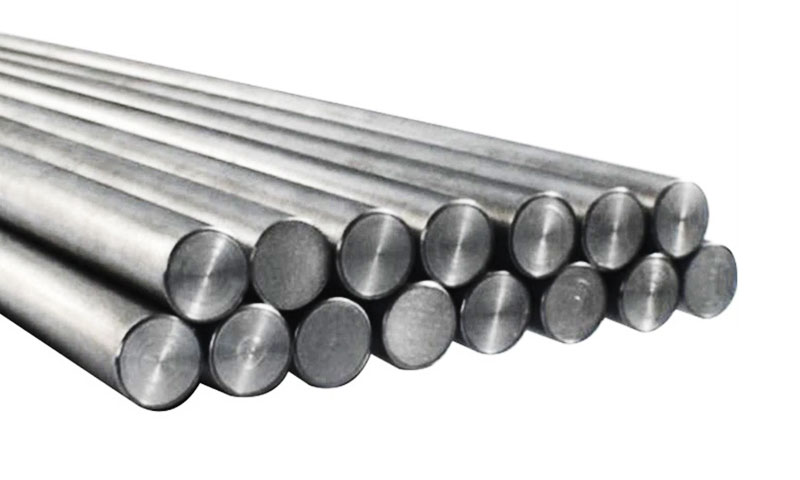1. giriiş
BİZ S20910 (commonly marketed as Azot 50 veya XM-19) and UNS S21800 (commonly marketed as Azot 60 veya Alaşım 218) are advanced austenitic paslanmaz çelikler engineered for demanding service.
Both deliver better performance than conventional 300-series grades, but they are optimized for different priorities:
- S20910 (Azot 50) bir korozyona dayanıklı, nitrogen-strengthened austenitic stainless optimized for high corrosion resistance (including sour service), iyi güç, Mükemmel Tokluk (including cryogenic), ve iyi kaynaklanabilirlik.
It is often specified where resistance to pitting, SCC and low-temperature toughness are required together with reasonable strength. - S21800 (Azot 60) is formulated primarily for wear and galling resistance while retaining corrosion resistance typical of austenitics.
It contains high silicon and manganese for tribological performance and is selected where sliding contact, safra, and high wear are the dominant failure modes.
This article compares composition, mechanical and corrosion behaviour, imalat, and real-world application trade-offs so you can select the right alloy for a specific component or environment.
2. What Is UNS S20910 (Azot 50)
BİZ S20910, yaygın olarak bilinir Azot 50 veya XM-19, bir high-performance nitrogen-strengthened austenitic stainless steel.
It is engineered to deliver a combination of Mükemmel korozyon direnci, yüksek güç, süneklik, ve tokluk, including at cryogenic temperatures.
These attributes make it well-suited for demanding industrial applications such as chemical processing, Deniz Ortamları, and sour-service conditions.
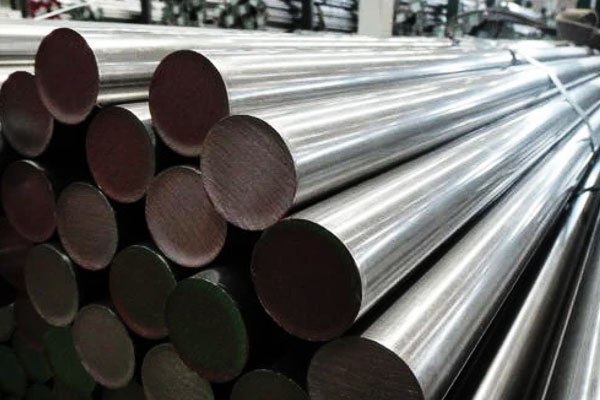
Key material designations and specifications katmak:
- ASTM A276 / A479 (as XM-19)
- UNS S20910
- İTİBAREN 1.3964
Primary characteristics of UNS S20910 (Azot 50):
- Korozyon direnci: Enhanced by increased chromium, molibden, ve azot içeriği; highly resistant to pitting and crevice corrosion in chloride environments.
- Mekanik güç: Stronger than conventional 300-series stainless steels, with excellent yield and tensile properties.
- Ductility and toughness: Maintains performance at both elevated and cryogenic temperatures.
- Fabrication and weldability: Can be machined, şekillendirilmiş, and welded with conventional techniques; solution annealing restores ductility after cold working.
- Nitrogen-strengthened: Nitrogen addition increases yield strength and contributes to pitting resistance without compromising austenitic ductility.
- Application suitability: Listed in NACE MR0175 for sour service, suitable for marine hardware, kimyasal proses ekipmanı, basınç bileşenleri, and structural applications requiring corrosion resistance and mechanical performance.
3. What Is UNS S21800 (Azot 60)
BİZ S21800, Genellikle Azot 60 veya Alaşım 218, bir high-performance austenitic stainless steel designed primarily for wear and galling resistance, while maintaining good corrosion performance typical of austenitics.
Its specialized composition makes it ideal for applications where sliding contact, adhesive wear, and high surface stress are primary concerns.
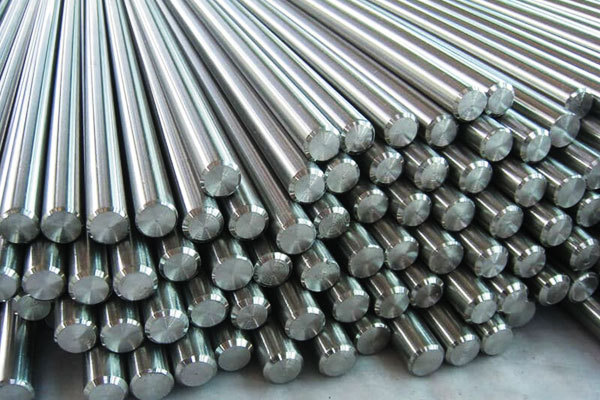
Key material designations and specifications include:
- ASTM A276 / A479 (for bars, çubuklar, and other wrought forms)
- UNS S21800
Primary characteristics of UNS S21800 (Azot 60):
- Wear and galling resistance: Elevated manganese and silicon content, combined with a nitrogen-strengthened austenitic matrix, provides superior resistance to safra, adhesive wear, and surface seizure.
- Korozyon direnci: While not as corrosion-resistant as Nitronic 50 in highly aggressive chloride environments, BT teklifleri İyi genel korozyon direnci suitable for moderate chemical and marine exposures.
- Mekanik güç: Exhibits high strength in both annealed and cold-worked conditions, with excellent surface hardness after work hardening.
- Fabrication and welding: Can be welded and fabricated using standard methods, though its higher silicon and manganese content may require adjustments in welding filler selection and machining parameters.
- Application suitability: Genel olarak kullanılır Valf sapları, bağlantı elemanları, pompa şaftları, bearing surfaces, and other components subjected to repeated sliding contact or wear-intensive service.
4. Typical Chemical Compositions and Alloying Differences
A critical factor distinguishing UNS S20910 (Azot 50) and UNS S21800 (Azot 60) is their alloying strategy, which directly influences corrosion resistance, mekanik güç, wear behavior, and fabrication characteristics.
While both are nitrogen-strengthened austenitic stainless steels, they are optimized for different service priorities.
Representative Chemical Compositions (Ağırlık%) and Performance Role
| Eleman | UNS S20910 (Azot 50) | UNS S21800 (Azot 60) | Key Role in Performance |
| Karbon (C) | ≤ 0.06 | ≤ 0.10 | Controls strength, limits carbide formation; low C improves corrosion resistance and weldability |
| Krom (CR) | 20–23 | 16–18 | Primary contributor to corrosion resistance; higher Cr in S20910 increases PREN |
| Nikel (İçinde) | 11–14 | 8–9 | Östenit stabilizatör; tokluğu ve sünekliği arttırır; higher Ni in S20910 supports cryogenic performance |
| Manganez (MN) | 5–6 | 8–9 | Increases work-hardening and galling resistance; high Mn in S21800 aids wear performance |
| Silikon (Ve) | ≤ 0.5 | 3.5–4.5 | Improves oxidation and wear resistance; higher Si in S21800 supports galling resistance |
| Molibden (Mo) | 1.5–3 | Belirtilmedi / iz | Çukurlaşma ve çatlak korozyon direncini arttırır; present in S20910 to resist chlorides |
| Azot (N) | 0.10–0.20 | 0.08–0.18 | Strengthens austenitic matrix; korozyon direncini iyileştirir; supports wear resistance in S21800 |
| Ütü (Fe) | Denge | Denge | Matris öğesi; balances alloying; provides basic austenitic structure |
Interpretation: S20910 emphasizes CR + İçinde + Mo + N (classic austenitic corrosion alloying with nitrogen strengthening and Mo for pitting resistance).
S21800 trades some chromium and nickel for elevated silicon and manganese, which improve hardness, wear and galling resistance.
4. Mechanical Properties and Temperature Behaviour
BİZ S20910 (Azot 50) and UNS S21800 (Azot 60) exhibit distinct mechanical profiles reflecting their alloying strategies.
Anahtar mekanik özellikler
| Mülk | UNS S20910 (Azot 50) | UNS S21800 (Azot 60) | Practical Implication |
| 0.2% Verim gücü (MPa) | 350–420 | 320–380 | S20910 offers higher baseline strength for corrosion-critical applications; S21800 gains strength via work hardening |
| Gerilme mukavemeti (MPa) | 650–750 | 600–700 | S20910 provides slightly higher ultimate strength; S21800 maintains adequate tensile strength with wear focus |
| Uzama (%) | 30–45 | 25–40 | S20910 maintains excellent ductility; S21800 is slightly less ductile but sufficient for forming/fabrication |
| Sertlik (HRB / HRC) | HRB ~85 typical annealed | HRB ~85, can be higher with work hardening | S21800’s higher Mn/Si allows superior surface hardness after cold work, enhancing galling resistance |
| Etkisi Tokluk (J at room temp) | Harika; retains toughness at cryogenic temps (-196° C) | İyi; slightly lower than S20910 in cryogenic applications | S20910 preferred in low-temperature or highly dynamic loading applications |
| Elevated Temperature Performance | Good up to ~600–700°C | Reasonable; high Si improves oxidation resistance at moderate temperatures | S20910 favored for high-temperature corrosion exposure; S21800 for wear-exposed high-temperature components |
Temperature Behaviour
- Cryogenic Performance:
S20910 retains ~90% of impact energy at liquid helium temperatures, making it suitable for LNG storage, cryogenic piping, ve havacılık uygulamaları.
S21800 retains reasonable toughness but is not optimized for extreme low temperatures. - Yüksek sıcaklık performansı:
Both alloys maintain dimensional stability and strength at moderate elevated temperatures.
Nitronic 50’s Mo content provides additional resistance to high-temperature corrosion, while Nitronic 60’s high Si content improves oxidation resistance in sliding-contact applications. - Sertleştirme:
Both alloys are austenitic and work-hardening, meaning mechanical properties, especially hardness and yield strength, can be increased via cold working.
S21800 benefits most due to high Mn and Si, improving wear and galling performance.
5. Corrosion Resistance and Pitting Resistance (Odun)
Çukurluk Direnci Eşdeğeri Numarası (Odun) is a useful indicator of resistance to chloride pitting; it’s calculated from Cr, Mo and N content (simplified form: PREN ≈ Cr + 3.3× mo + 16× n).
- Azot 50 (S20910) — higher Cr, Mo and N yield PREN values in the low-to-mid 30s (typical engineering figure ≈ ~34).
That places it well above 316L (PREN ≈ 20–25) and makes it suitable for many chloride-bearing environments, including some marine and sour service (it is commonly accepted for NACE MR0175 qualifying in many conditions—verify certificate). - Azot 60 (S21800) — because Mo is typically absent and Cr is lower, PREN is daha düşük (typical mid-20s or less depending on exact chemistry).
While S21800 resists general corrosion reasonably well, öyle Olumsuz chosen primarily for pitting resistance; yerine, it is used where galling and wear are primary concerns.
6. Giymek, galling and tribological performance
- Azot 60 (S21800) için tasarlandı galling resistance and sliding wear.
High silicon and manganese, combined with work-hardening capacity, produce a surface that resists adhesive wear and metal-to-metal seizure.
Typical uses include valve stems, koltuklar, bağlantı elemanları, and pump components where repeated sliding contact occurs. - Azot 50 (S20910) teklifler İyi aşınma direnci, but its primary strengths are corrosion resistance and toughness rather than optimized galling resistance.
It is sometimes used in wear applications where corrosion control is also required, but for extreme galling environments S21800 usually outperforms it.
7. İmalat, welding and heat-treatment considerations
Kaynaklanabilirlik
- Both alloys are kaynaklanabilir by standard processes (TIG, BEN, Susmak).
- S20910 (higher Ni/N) is highly weldable and retains corrosion resistance after welding when proper procedures and filler metals are used.
Low carbon and stabilized practices can minimize sensitization risk. - S21800 requires attention to heat input and filler selection because its high Si and Mn can influence weld metal composition; preheat/post-weld heat treatment practices depend on component size and code requirements.
Forming and machining
- Both are işten sertleştirici austenitics; S21800’s higher Si/Mn can make cutting more challenging—tooling and speeds need adjustment.
S20910 in solution-annealed condition is generally easier to machine/form.
Isıl işlem
- These are austentic alloys—strength is primarily from cold working and alloying; full hardening by quench/tempering is not applicable.
Solution annealing can restore ductility and corrosion resistance (typical anneal ~1000–1100 °C followed by rapid cooling).
Hydrogen/sour service
- S20910’s chemistry and listing in some sour-service guidance make it suitable for H₂S environments (verify NACE/ISO certifications).
For sour service weld procedures and hardness limits (HRC thresholds) are normally enforced.
8. Applications of UNS S20910 vs UNS S21800 Austenitic Stainless Steel
The distinct alloying strategies, Mekanik Özellikler, and corrosion/wear characteristics of UNS S20910 (Azot 50) Ve UNS S21800 (Azot 60) define their suitability across different industrial applications.
Applications of UNS S20910 (Azot 50)
UNS S20910 is engineered for yüksek korozyon direnci, Mükemmel Tokluk, ve iyi kaynaklanabilirlik, making it ideal for environments where both corrosion and mechanical performance eleştirel.
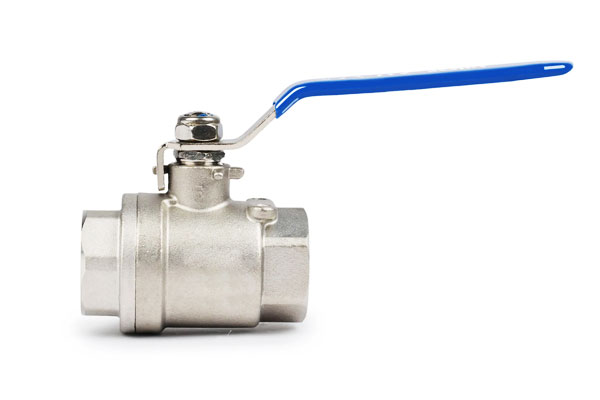
| Sanayi / Sektör | Tipik uygulamalar | Key Performance Requirement |
| Deniz & Açık deniz | Seawater fittings, pompa şaftları, bağlantı elemanları, vanalar | Yüksek klorür direnci, prevention of pitting/crevice corrosion |
| Kimyasal & İşleyiş | Isı eşanjörleri, reaktörler, boru, tanklar | Resistance to acids, klorürler, and sour service (H₂'nin maruz kalması) |
| Kriyojenik Uygulamalar | LNG storage and transfer piping, cryogenic valves | Retains toughness at extremely low temperatures (-196° C) |
| Havacılık | Fuel lines, cryogenic components | Yüksek güç, korozyon direnci, low-temperature ductility |
| Enerji & Güç | Boiler components, turbine parts in corrosive environments | Combination of corrosion resistance and mechanical integrity |
Applications of UNS S21800 (Azot 60)
UNS S21800 is optimized for galling and wear resistance while maintaining reasonable corrosion performance.
It is ideal for mechanical components subjected to sliding, adhesive contact, or high surface stress.
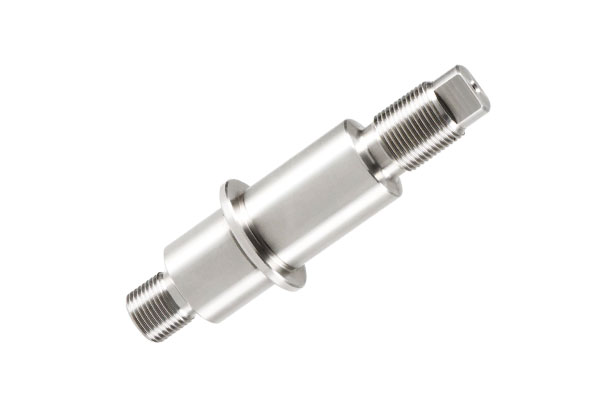
| Sanayi / Sektör | Tipik uygulamalar | Key Performance Requirement |
| Valf & Pump Industry | Valf sapları, koltuklar, pompa şaftları, bağlantı elemanları | High resistance to galling, kayar aşınma, adhesive seizure |
| Endüstriyel makine | Rulmanlar, burçlar, high-wear mating surfaces | Yüzey sertliği, work-hardening capability, düşük sürtünme |
| Otomotiv & Ağır ekipman | Bağlantı elemanları, high-wear components, aktüatörler | Galling prevention, durability under repeated sliding or contact |
| Deniz Uygulamaları | Deck hardware, mechanical joints | Moderate corrosion resistance with high wear/galling protection |
| Kimyasal işleme | Mixer shafts, agitator blades | Wear-resistant components where moderate corrosion occurs |
Application Guidance
- Choose UNS S20910 when the primary concern is corrosion resistance in aggressive or sour environments, especially when toughness, kaynaklanabilirlik, and low-temperature performance are required.
- Choose UNS S21800 when safra, giymek, and sliding contact dominate failure modes, even if corrosion resistance is less critical.
- In complex assemblies, hybrid designs can leverage both alloys—using S20910 for corrosion-critical parts and S21800 for high-wear mating surfaces.
Surface engineering such as kaplamalar, nitriding, or PVD treatments can further extend service life when combined with these alloys.
9. Direct Comparison Table: UNS S20910 vs UNS S21800
| Özellik / Mülk | UNS S20910 (Azot 50) | UNS S21800 (Azot 60) | Practical Implication |
| Primary Focus | Korozyon direnci, sertlik | Wear/galling resistance, yüzey sertliği | Guides selection based on environment and mechanical stress |
| Verim gücü (MPa) | 350–420 | 320–380 | S20910 has higher baseline strength; S21800 can achieve higher surface hardness via cold work |
| Gerilme mukavemeti (MPa) | 650–750 | 600–700 | S20910 slightly higher; S21800 optimized for wear resistance rather than ultimate strength |
| Uzama (%) | 30–45 | 25–40 | S20910 more ductile; S21800 slightly less but adequate for fabrication |
| Sertlik (HRB / HRC) | HRB ~85 typical annealed | HRB ~85, can increase with work hardening | S21800 better for galling and surface wear applications |
| Etkisi Tokluk | Harika; retains cryogenic performance | İyi; lower at cryogenic temperatures | S20910 preferred in low-temperature or dynamic loading environments |
| Korozyon direnci | Çok yüksek | Ilıman | Guides alloy choice in chemical, deniz, or sour-service applications |
| Giymek / Galling Resistance | Ilıman | Çok yüksek | S21800 is the preferred option for moving parts, Valf sapları, ve bağlantı elemanları |
| İmalat & Kaynak | Harika; solution annealed or strain-hardened | İyi; requires consideration for welding filler and machining parameters | S20910 easier to fabricate in complex geometries; S21800 may require tooling adjustments |
| Maks Servis Sıcaklığı | ~900°C | ~750°C | S20910 suitable for higher temperature corrosion exposure; S21800 for wear-exposed moderate temperatures |
| Odun (Çukurluk Direnci Eşdeğeri Numarası) | ~34 | ~23.4 | S20910 provides superior resistance to pitting and crevice corrosion, özellikle |
10. Çözüm
BİZ S20910 VS S21800 are complementary alloys within the Nitronic family.
Pick S20910 where corrosion resistance (especially pitting/crevice and sour service) plus toughness and weldability are paramount.
Pick S21800 where galling and wear dominate and corrosion is a secondary concern.
In many real applications the optimum solution is a combination—design the system so each part sees the alloy best suited to its dominant failure mode, or apply surface engineering to extend service life.
SSS
Are UNS S20910 and S21800 magnetic?
No—both are fully austenitic (or near-fully austenitic) in the annealed state, with magnetic permeability <1.005 (ASTM A342). Cold working may induce weak magnetism, but this is reversible via annealing.
Can I weld S21800 with standard stainless fillers?
Evet, but select fillers and procedures to accommodate S21800’s high Si/Mn chemistry—consult welding procedure specifications and filler supplier guidance.
Which alloy resists sulfide stress cracking (SSC)?
S20910 is commonly accepted for many SSC environments and is used in NACE-subject applications; verify specific NACE/ISO certification and hardness limits.
Is Nitronic 60 (S21800) suitable for seawater?
It has reasonable general corrosion resistance in seawater but lacks the pitting resistance of Nitronic 50 or Mo-bearing grades; if seawater pitting is critical, choose S20910 or a higher PREN alloy.
Can either alloy be heat-treated to increase strength?
These austenitic alloys gain strength mainly by soğuk iş ve alaşım; conventional quench/temper treatments are not used to significantly increase strength. Solution annealing restores ductility/corrosion resistance.
